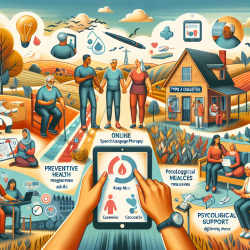Understanding Naloxone and Overdose Beliefs: A Call to Action for Practitioners
The opioid crisis continues to be a significant public health challenge in the United States, with overdose education and naloxone distribution (OEND) being critical strategies to mitigate opioid-related deaths. Despite the proven effectiveness of naloxone in reversing opioid overdoses, a recent study titled "Beliefs and misperceptions about naloxone and overdose among U.S. laypersons: a cross-sectional study" highlights the prevalence of misinformation and unsupported beliefs about naloxone among laypersons.
Key Findings from the Study
The study surveyed 702 U.S. laypersons to assess their beliefs about naloxone and overdose. It revealed three distinct belief profiles:
- Profile 1 (More Aligned): Individuals in this group generally aligned with scientific evidence, showing high trust in naloxone's effectiveness and rejecting unsupported claims.
- Profile 2 (Moderately Aligned): This group held moderate beliefs, showing some acceptance of unsupported claims but still recognizing naloxone's efficacy.
- Profile 3 (Less Aligned): Participants in this profile were more likely to believe unsupported claims and showed lower trust in science.
Implications for Practitioners
For practitioners, understanding these belief profiles is crucial in tailoring educational and intervention strategies. Here are some ways to implement the study's findings:
- Enhance Education: Develop targeted educational programs that address specific misconceptions about naloxone, focusing on its safety and effectiveness in preventing overdose deaths.
- Build Trust in Science: Engage communities in discussions that foster trust in scientific research and evidence-based practices, particularly among groups with lower trust in science.
- Promote Training: Encourage participation in naloxone training programs, which can help dispel myths and empower individuals to act effectively in overdose situations.
Encouraging Further Research
The study underscores the need for ongoing research to explore the factors influencing beliefs about naloxone and overdose. Practitioners can contribute by:
- Participating in Studies: Engage in research initiatives that seek to understand and address barriers to naloxone acceptance and use.
- Collaborating with Researchers: Work with academic and public health institutions to develop and test interventions that improve public understanding of naloxone.
By integrating these strategies, practitioners can play a pivotal role in combating the opioid epidemic and saving lives through informed naloxone distribution and education.
To read the original research paper, please follow this link: Beliefs and misperceptions about naloxone and overdose among U.S. laypersons: a cross-sectional study.










